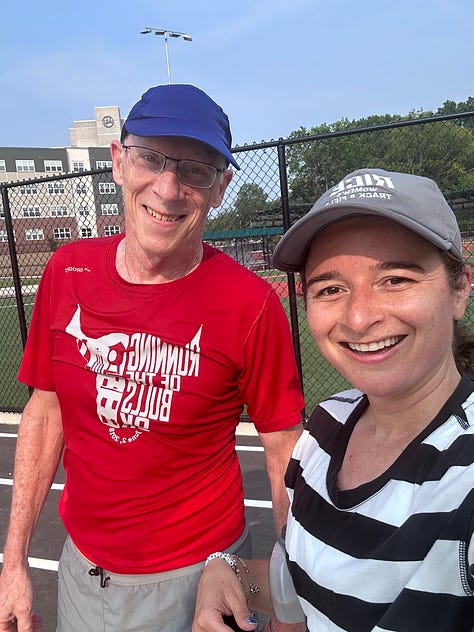
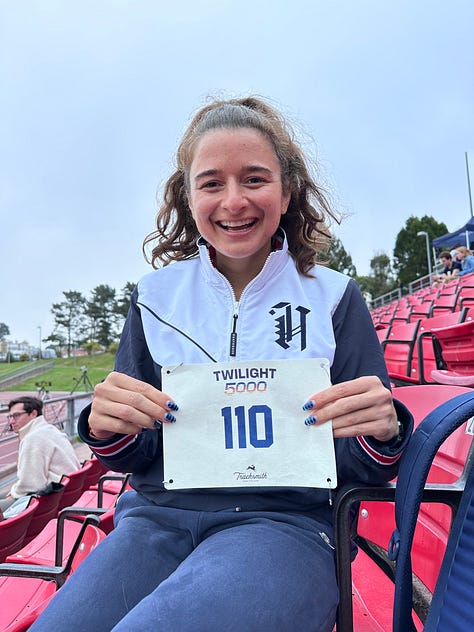
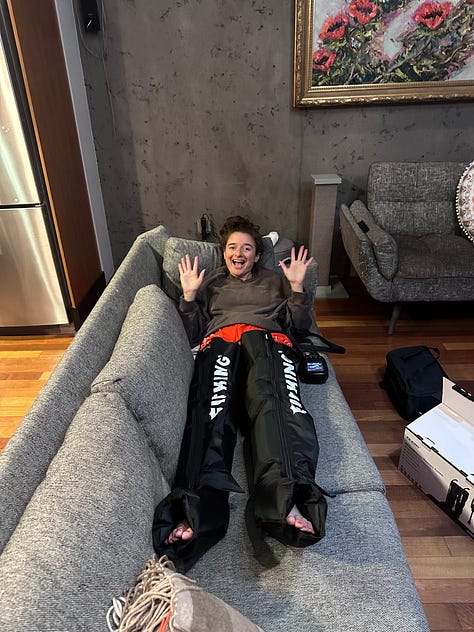
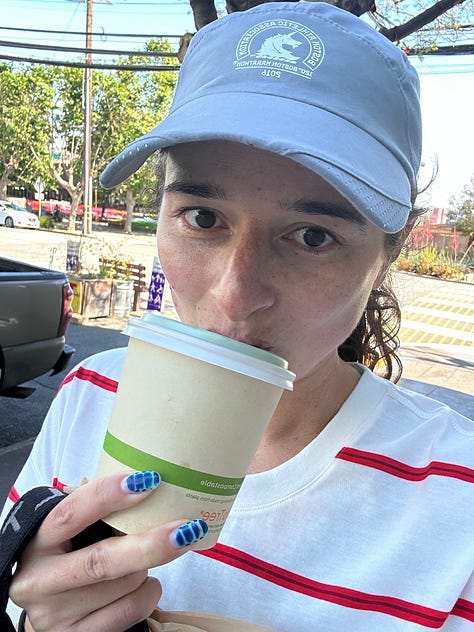
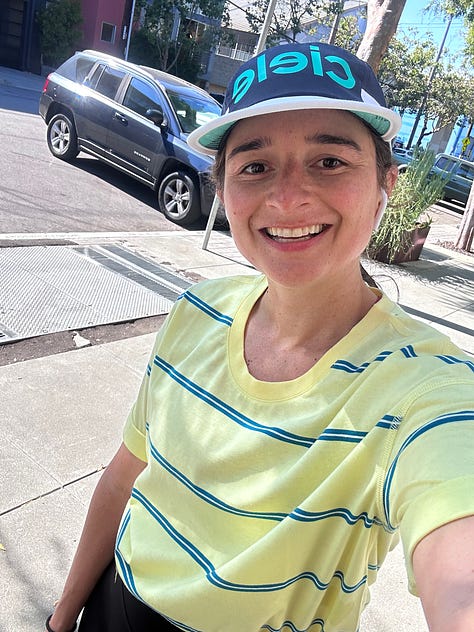
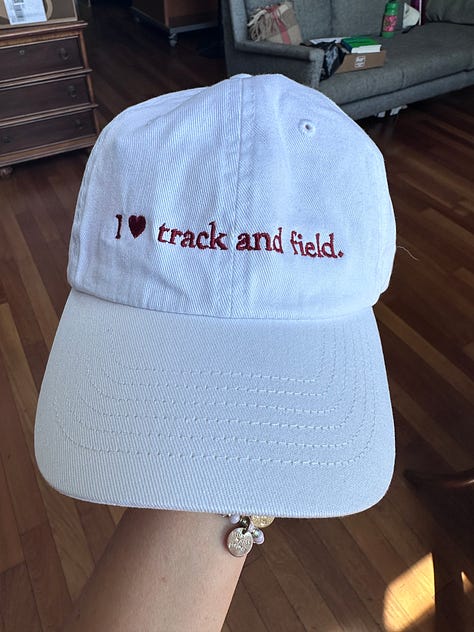
One week down, 15 to go. This first week was not entirely what I expected, but definitely what I needed because it left me excited for what’s ahead. It started in Durham, NC’s heat and humidity, and included a treadmill run to avoid bad air, a track race, and a last minute-ish swap of my long run day to avoid the San Francisco Marathon.
This week I’m sharing reflections on a training philosophy, my race recap, and some odds n’ ends that helped me start this training block strong.
📋 Total miles: 36.3 miles
Monday: 5.4 miles (steady)
Tuesday: 4.5 miles (easy, treadmill)
Wednesday: 6.1 miles (5000m track race + warm up & cool down)
Thursday: 4.8 miles (recovery)
Friday: Rest
Saturday: 10.4 miles (steady)
Sunday: 5.1 miles (3 x 8:00 continuous hills)
😬 Easy can be hard
Ever a student of the sport, this week I read 80/20 Running on the recommendation of my friend, Chacho. The theory behind 80/20 is that the vast majority of your miles should be easy, and the remaining 20% of your mileage should be strong, fast[er], and purposeful. On its face, this breakdown — while specific — seems logical (maybe even obvious). But despite the best of intentions, many potential adherents fail.
The reason? Everyone’s out here running too hard. The book explains that even veteran runners in formal research studies report their (brace yourself, first nerdy running term) rate of perceived exertion as lower than what their biometrics actually show. Said plainly, they think they’re running easy, but their body says otherwise.
While I could never tell you the exact split, I’d say my lifetime miles have been default hard. I recall in high school learning about Arthur Lydiard (a world famous coach and the spiritual father of the 80/20 movement) and being told that “long slow distance made long (as in sad) slow runners”. So I spent my teens and early 20s pounding intervals on the track and tagging along with my much faster teammates on easy runs. In my mid 20s, I whizzed past hobby joggers in college gear like I needed them to know I had run D1.
But there’s one period where things were very different. In 2014, I decided to train for a marathon with two close friends. We did almost all of our mileage together, spending our weekends running and talking (concurrently, crucially) for hours. The training pace was modest for me — the camaraderie was paramount. When it came time to race alone, I went out comfortably. Comfortable on that day meant 7:30 miles, a pace I didn’t touch in training. I hit mile 20 (affectionately known as “The Wall”) and instead of dying, I started picking up the pace. Every one of my last six miles was faster than the one before. I was shocked by my finishing time. Always one to revert to my BS, I never trained the same way again.
Reading the book this week, I realized that I’d unintentionally done 80/20 training for that cycle. It was a visceral light bulb moment. Shouldn’t I do it again? But I was super looking forward to the plan I had chosen. I pulled up the PDF and decided to do some math (because #nerd). I put easy run minutes into one column, harder work in another. In the case of an interval or fast finish tempo, I split the total time between the two columns. The first week was split 80/20 exactly. I did the same with the second; it was 79/21. I was so excited I literally wrote “wow!” on the page (because #supernerd).
So now that I know I fell into a 80/20 plan, I am working on figuring out what easy — or “Zone 2” in more technical parlance — means for me. For the last few months, I’ve been working on slowing down, but it’s been more challenging than expected. One issue is that when I go for a run, I want to feel like I did something; in 80/20 land, coming back from a run feeling like you did nothing or (gasp!) fresher than you started is a win. Running slow also feels a bit unnatural for my stride. Things are looking up, though. A breakthrough from the book is calculating heart rate zones based on lactic thresholds as opposed to maximum heart rate. I’ll skip getting in the weeds, but the functional difference is that my Zone 2 heart rate is higher than I’d initially calculated. This is great because in order to stay in my calculated Zone 2 I basically had to be walking. I should have known something was up.
I’m glad I read this book in the first week of marathon prep. I’m already more conscious of the purpose of each run. And, in an ironic twist, running easy might end up being one the harder things I do in this training block — it requires discipline and a commitment to the process. Since I feel like I’m hard-wired to do too much, I’ll need help. Hold me accountable, crew.
🐇 The Tracksmith Twilight 5000
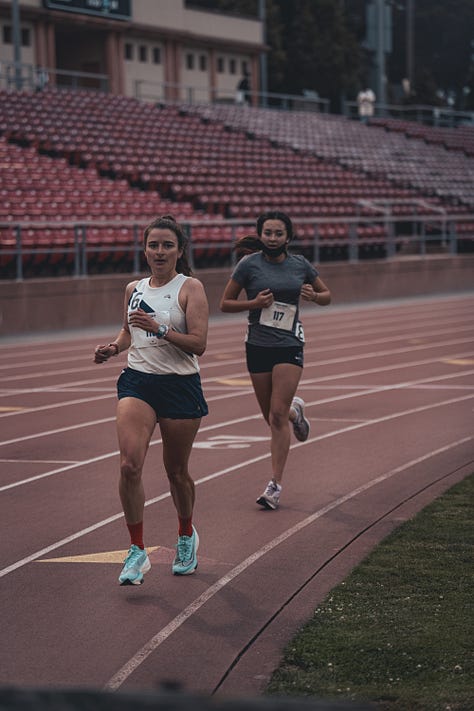
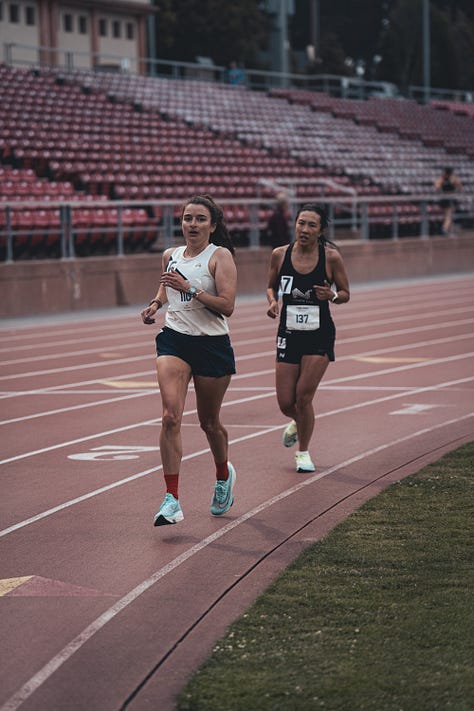
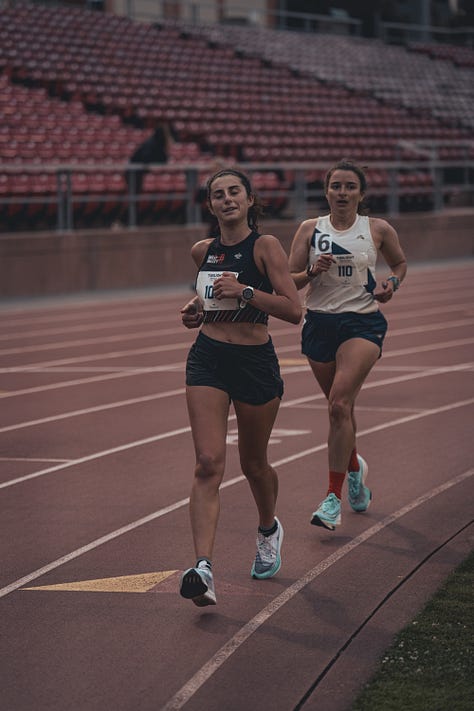
Tracksmith is a niche-ish running brand that hosts nighttime track meets with heat-after-heat of 5000s all summer long. Instead of a tempo run, I decided that racing a 5000 would be a good way to benchmark my current fitness. My partner, Bill, and I headed to the track Wednesday night for my 7 PM race. I know it’s been a scorcher of a summer for many, but Bill wore a puffer jacket and a fur-lined hat to the meet. San Francisco is weird.
I got put into a heat that felt like it was a bit faster than I wanted, but I decided to stick it out. When the gun went off I found myself in dead last in the first 200m. Uh-oh. Over the next few laps, the commentator charitably announced to the crowd “Claire’s still smiling” every time I came around at the back. I was beginning to regret my choices…
Maybe it’s the 10,000 hours, or perhaps track god intervention, but I found a rhythm that I could hold without backing down. As I ground out lap-after-lap, I kept catching people who’d gone out faster. My last half mile was a [comparative] tear. I finished very proud of my effort and resilience. My time was 21:26.33, which I’ll take for week 1. I have another 5000 next month — watch this space.
🧳 Odds n’ ends
Listening to: I rarely listen to music while running, but during this week’s long run the spirit overtook me to listen to a vibe I affectionately refer to as “sexy hotel lobby music” — think George Benson’s Give Me the Night and Luther Vandross’ Never Too Much.
Snacking on: My most delicious post-recovery run snack this week was a matcha latte and ginger scone from Piccino.
Wearing: I donned two of my favorite Tracksmith items at the race on Wednesday. Up first: the Allston Bra. It’s supportive, plus the whole front is a giant pocket which is convenient for light items like AirPods, money, and a house key. I also wore the Speed Crew Sock, which I have in 7 colors so I never have to run in anything else. Highly recommend.
Inspired by: Track’s premiere events are called the Diamond League, and Friday in Monte Carlo the World Record was set in the women’s mile by Faith Kipyegon of Kenya in 4:07.64! Faith has broken the 1500m and 5000m world records this year, as well — a season to remember. This mile race, though, was particularly exciting because every runner in the race set a personal best and there were 8 new national records (including American Nikki Hiltz in 4:16.35).
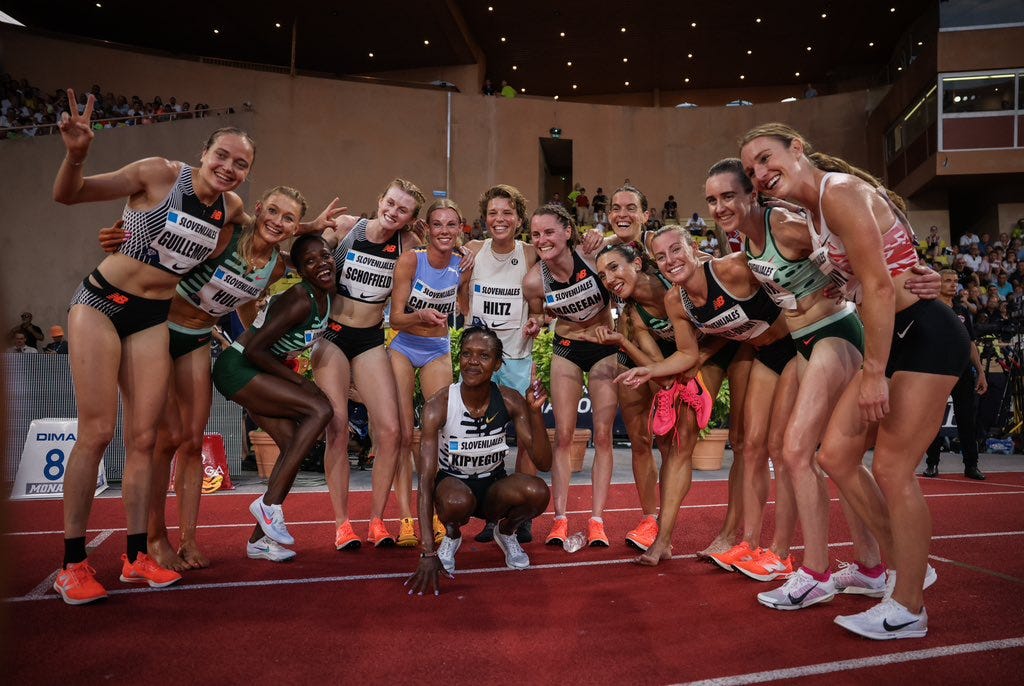
Thanks for joining my first week of training! If you found this valuable, interesting, or fun, please like, leave a comment, and share this with a friend. Also, we have 15 weeks to go — any feedback to inform what’s ahead is more than welcome. Lastly, if you’re able and feel so moved, please consider donating $26 ($1/mile) to my CSforAll fundraiser.
See everyone next Sunday! 🏃🏻♀️






Great start!
I enjoyed and learned from your post. Thank you!
Cool discovery about your 2014 training and your current training plan. (#nerd FTW!) Your discussion recalled several influences:
- The importance of intentional, informed long-term planning by coaches and educators and its impact on athletes and students
- The "stress + rest = growth" paradigm emphasized by Steve Magness and Brad Stulberg in "Peak performance"
- The benefit of knowing the focus of each run (many times, it's recovery!) and each phase of a training cycle, as preached by some athletes (e.g., Deena Kastor), coaches, and training books (e.g., "Advanced marathoning")
- The encouragement to trust your plan---and, closer to race day, your prep---and not do too much on easy days and during taper. Deena Kastor says it well in her book "Let your mind run": "[F]or the first time in my life [I] felt the confidence born of preparation."
- A time to run hard, and a time to run easy, to paraphrase Ecclesiastes 3:1
Congrats on the 5k! In addition to an uptempo workout, it sounds like you also got a psychological workout in trusting your pace and your strategy. Great marathon training. Your story about the announcer and questioning life choices gave me flashbacks to a summer all-comers meet at Rice: I trailed the rest of the field in a 400 m heat by at least 50 m out of the final turn (yeah, I am so not a sprinter) and a similarly charitable announcer encouraged the spectators, "Let's give him a little clap-clap" /(>.<)\
To everything you said about the Diamond League mile: Yes.
Keep at it!
💜